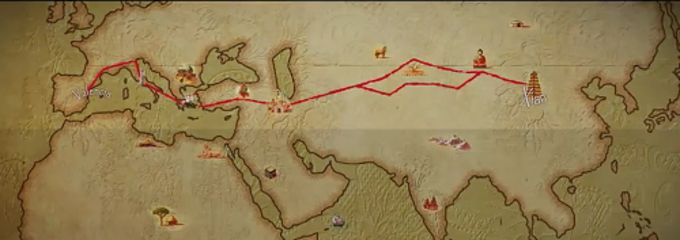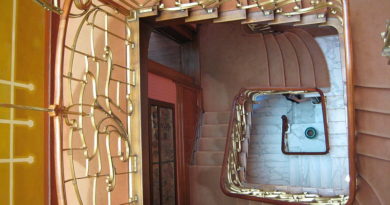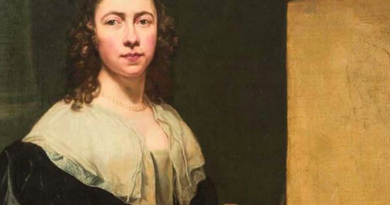The Silk Road: a successful tale
“I am Jew. Have not a Jew eyes? Have not a Jew hands, organs, arms, legs, senses, affections, desires? Are Jews not fed with the same food, hurt with the same weapons, subject to same diseases, healed by the same means, warmed and cooled by the same winter and summers as Christian is? (…)”
William Shakespeare, The Merchant of Venice.
The Silk Road represents one the most effective tools of nonviolent diplomacy in mankind’s history, made all the more notable when we examine just how easily our civilsation has regressed to the sword.
The Silk Road is most famous as a network of trade routes connecting modern day China, India, Iran and Europe, but its role as a conduit for peaceful coexistence between these vastly different peoples and cultures is perhaps the most remarkable aspect of this ancient pathway. The Silk Road represents a robust history of trade, travel, exchange, globalization, an unprecedented transfer of knowledge, and an essential and exemplary history of hospitality.
The term “Silk Road” is a recent construction, given significance by the German geologist Ferdinand von Richthofen in the mid-nineteenth century. It refers to all the routes, both land and sea, along which silk and many other goods were exchanged between people from across the world. The well trodden land route and great trade winds of the Indian Ocean connected east and west in every conceivable way.
Nowadays, many historic buildings mark the remnants of the Silk Roads through caravanserais, ports and cities. Moreover, the long-standing and persistent legacy of this unique network is reflected in the distinct and interconnected cultures, languages, customs and religions that have developed over millennia along these routes. Now more than ever, is the tremendous gravity of the cultural impact of the silk road coming into focus for both academic and touristic reasons.
 Brussels Express sat down for an interview with José Maria Chiquillo, President of the International Network for the UNESCO’s Silk Roads Online Platform and an eminent Silk Road expert. Mr. Chiquillo, an attorney by training and deputy in the Spanish Parliament by vocation, started his relationship with the Silk Road in his native Valencia, where public outcry over the College of High Skill Art falling into disrepair drew his interest. This building, dating from the 15th century, has hosted the Guild of Valencian Silk Weavers without pause from its creation into the present day. Inexplicably, such an historical gem was in ruins until a couple of years ago. The commitment of Mr Chiquillo, Vicente Genovés –the president of the College of High Skill Art- concerned citizens and private entities –like the Hortensia Herrero Foundation, who paid for its restoration-, saved it from collapse.
Brussels Express sat down for an interview with José Maria Chiquillo, President of the International Network for the UNESCO’s Silk Roads Online Platform and an eminent Silk Road expert. Mr. Chiquillo, an attorney by training and deputy in the Spanish Parliament by vocation, started his relationship with the Silk Road in his native Valencia, where public outcry over the College of High Skill Art falling into disrepair drew his interest. This building, dating from the 15th century, has hosted the Guild of Valencian Silk Weavers without pause from its creation into the present day. Inexplicably, such an historical gem was in ruins until a couple of years ago. The commitment of Mr Chiquillo, Vicente Genovés –the president of the College of High Skill Art- concerned citizens and private entities –like the Hortensia Herrero Foundation, who paid for its restoration-, saved it from collapse.
In 1987, the UNESCO put into place the Integral Study of the Silk Road: Roads of Dialogue Program. What were its main objectives?
The main goal was to promote the study of the Silk as a transferor of experiences, ways of life, ideas and knowledge between the West and the East. The centre line is the Silk Road as the mechanism of contact between peoples and cultures. Since then, the UNWTO set up its own Silk Road Program and in 1994, the ministers for Tourism of the member countries of the Silk Road gathered in Uzbekistan with the aim of boosting the revival of these legendaries roads.
Culture and tourism. It seems the perfect combination. Is it as good as it sounds?
Absolutely. Actually, one of the objectives of this joint program created by the UNESCO and the UNWTO is to promote a certain tourism linked to the historical patrimony. More and more, tourists around the world choose their destinations on a cultural basis and associate leisure with culture.
València was included in the Silk Road maps in May 2015 after the approval of a resolution presented by you during the meeting of the UNESCO Silk Road Online Platform held in Xi’an. How did you convince your colleagues that Valencia should be part of the Silk Road platform?
Until that moment, all the maps of the Silk Road ended in Venice (Italy). That was something completely illogical. The main center for the trade of the silk in the Mediterranean area was precisely built in Valencia in the fourteenth century: la Lonja of the Silk (the Silk Exchange), which was declared UNESCO World Heritage in 1996. In the eighteenth century Valencia was the world capital of the silk. In fact, more than half of the inhabitants of the city at that time were directly or indirectly involved in the industry of the silk.
What does this new reality imply for the city?
It will give a great projection to the city. It will allow us to recover a forgotten path. València was a city where people and cultures mingled together, and this is a legacy that we cannot lose.
What is the main distinguishing feature of València in respect to the other cities alongside the Silk Road?
Each city and region has something special. For instance, Xi’an can claim to be the origin of the Silk Road; Uzbekistan, in the center of the route, is proud to be the heart of the road. And that is true, obviously. València is probably the unique city where the silk is plays a central role in the 21st century: in our main cultural expression –las Falles– the tradition of the silk is still alive, where more than 200.000 men and women wear the traditional clothes made in silk.




